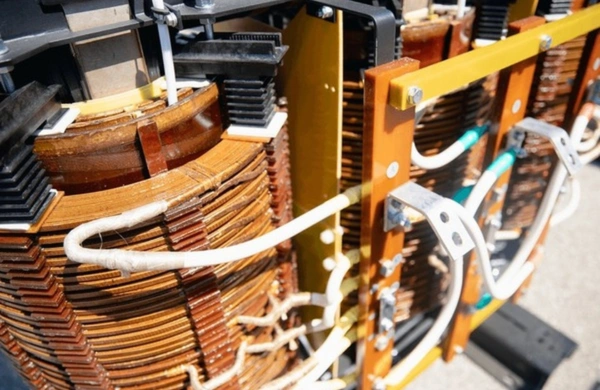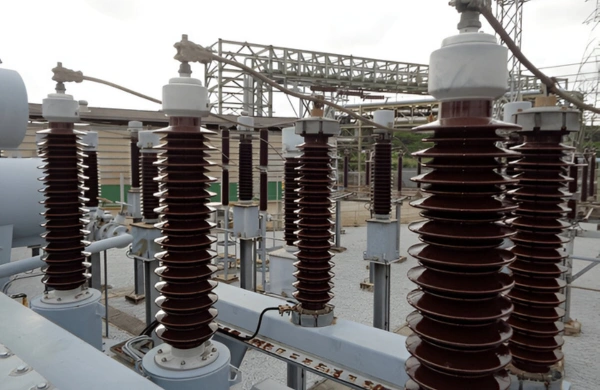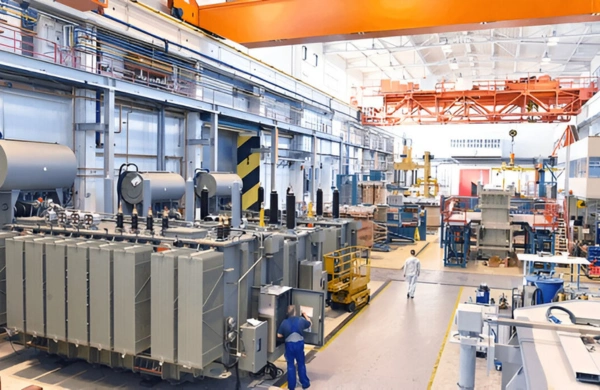Introduction
Electrical safety and equipment reliability are critical in modern industrial systems, where voltage disturbances, harmonics, and noise interference can severely impact performance. Isolation transformers play a vital role in mitigating these risks by electrically separating the primary circuit from the secondary circuit, ensuring safe power distribution and protecting sensitive devices.
Unlike step-up or step-down transformers, isolation transformers maintain equal input and output voltage while blocking DC currents and suppressing electrical noise. They are extensively used in industrial automation, data centers, healthcare facilities, and renewable energy systems to enhance operational stability and ensure personnel safety.
Leading isolation transformer manufacturers are leveraging precision lamination, advanced insulation materials, and automated winding technologies to deliver high-performance transformers compliant with UL, IEC, and IEEE standards. This blog explores their construction, functional principles, applications, and why North American industries trust manufacturers like Zetwerk for reliable isolation transformer solutions.
Know About Isolation Transformer Manufacturers Ensuring Power Safety
1. Working Principle and Function of Isolation Transformers
An isolation transformer consists of two windings—primary and secondary—mounted on a common magnetic core but without direct electrical connection. The power transfer occurs purely through electromagnetic induction, providing galvanic isolation between circuits.
This design serves multiple functions:
- Electrical Safety: Eliminates direct current paths and protects against electric shock.
- Noise Suppression: Filters out electrical noise and high-frequency interference from power lines.
- Equipment Protection: Shields sensitive electronic components from transient spikes and harmonics.
- Voltage Stabilization: Maintains consistent voltage output under fluctuating load conditions.
In industrial automation and control systems, isolation transformers form the backbone of reliable operation, especially in instrumentation and programmable logic controller (PLC) networks that require clean, stable power.
2. Construction and Material Engineering
Modern isolation transformers are engineered for high dielectric strength, magnetic efficiency, and minimal losses.
Key construction elements include:
Core Design:
Manufacturers typically use cold-rolled grain-oriented (CRGO) or amorphous steel laminations to minimize core loss and improve flux density. The core is precision-cut and assembled with tight tolerances to reduce magnetizing current and noise.
Winding Material:
High-conductivity copper or aluminum wires are used, depending on design requirements. Windings are insulated using high-temperature class materials (Class F or H) to withstand continuous operation.
Insulation and Isolation Barriers:
Mylar, Nomex, or epoxy resin barriers are incorporated between windings to maintain dielectric separation and prevent arcing. Manufacturers employ vacuum pressure impregnation (VPI) or resin encapsulation for enhanced mechanical stability and moisture resistance.
Shielding:
Electrostatic shields—thin copper or aluminum layers—are placed between windings to block common-mode noise, ensuring clean power output.
Through automated coil winding and lamination stacking, leading manufacturers maintain consistent performance across production batches, ensuring precise winding geometry and reliable electrical characteristics.
3. Electrical and Thermal Performance Characteristics
The performance of isolation transformers is determined by several critical electrical and thermal parameters:
- Voltage Ratio: Typically 1:1, though custom ratios can be configured based on application needs.
- Dielectric Strength: Rated to withstand high test voltages (up to 3–5 kV) between primary and secondary.
- Leakage Inductance: Controlled through optimized winding configuration to maintain stable load response.
- Insulation Resistance: Must exceed 100 MΩ at 500V DC for safety compliance.
- Thermal Performance: Designed for low temperature rise (≤60°C above ambient) under full load to ensure long operational life.
- Efficiency: High-grade magnetic materials and optimized core geometry yield 95–98% efficiency.
These parameters ensure that isolation transformers perform reliably in critical installations—data centers, medical imaging equipment, or power conditioning units—where safety and power quality cannot be compromised.
4. Industrial Applications and Use Cases
Isolation transformers serve a broad spectrum of industries that demand uninterrupted, noise-free power.
Industrial Automation:
Used in PLC control circuits and instrumentation systems to isolate sensitive components from high-voltage noise.
Medical Equipment:
Hospitals and diagnostic labs rely on isolation transformers to prevent current leakage and protect patients and operators in imaging and life-support equipment.
Data Centers:
They safeguard servers and communication equipment from transient disturbances, reducing downtime.
Renewable Energy Systems:
Solar and wind inverters use isolation transformers to ensure safety compliance and noise isolation between DC and AC systems.
Marine and Defense:
Isolation transformers protect electronic systems from ground faults and electrical interference in mission-critical applications.
Each of these sectors requires specialized design adaptations—thermal management, enclosure type, noise suppression levels, and regulatory compliance—all of which Zetwerk transformers are customized for North American OEMs.
5. Compliance, Testing, and Safety Standards
To ensure absolute safety and reliability, isolation transformers are tested and certified under rigorous international standards:
- UL 506 / UL 5085: Safety and performance requirements for dry-type transformers in industrial applications.
- IEC 61558-2-4: Specifies safety for isolation transformers and power supply units.
- IEEE C57.110: Guides harmonic and thermal performance in power systems.
- CSA C22.2 No. 66: Compliance for Canadian industrial electrical equipment.
Routine production tests include:
- Dielectric strength testing between primary and secondary
- Insulation resistance measurement
- Polarity and phase verification
- Load and no-load loss testing
- Temperature rise assessment
Manufacturers like Zetwerk implement automated test benches and data logging systems to ensure traceability and consistency in every unit produced.
6. Top Isolation Transformer Manufacturers in North America
1. Zetwerk Manufacturing USA – Offers precision-engineered isolation transformers for automation, medical, and renewable applications. From lamination cutting to full assembly, Zetwerk provides UL-certified manufacturing, advanced impregnation techniques, and scalable production for North American OEMs seeking dependable supply chains and shorter lead times.
2. Hammond Power Solutions (Canada/USA) – A leading manufacturer of dry-type isolation transformers built for industrial and commercial applications with high-efficiency magnetic designs and strong UL/CSA compliance.
3. Jefferson Electric – Produces compact isolation and control transformers with reliable dielectric strength and robust encapsulation for harsh environments.
4. Schneider Electric – Supplies isolation transformers integrated into power quality and automation systems for commercial facilities and industrial control.
5. ABB Power and Automation – Delivers medium- and low-voltage isolation transformers featuring advanced noise suppression and smart diagnostic monitoring capabilities.
7. Emerging Trends in Isolation Transformer Manufacturing
The transformer industry is evolving to meet the needs of electrification, automation, and digital control. Key trends shaping the future include:
- Use of Amorphous Core Materials for improved energy efficiency and reduced magnetizing current.
- Integration of Digital Monitoring Sensors to measure load, temperature, and harmonics in real time.
- Eco-Friendly Insulating Compounds replacing traditional varnishes for better environmental compliance.
- Compact Modular Designs to meet space constraints in EV charging stations and renewable energy systems.
Zetwerk’s integrated manufacturing approach enables rapid adoption of these technologies—combining design, fabrication, and assembly under one roof to maintain full control over cost, quality, and lead time.
Conclusion
Isolation transformers are indispensable for ensuring electrical safety, reducing interference, and maintaining consistent power quality in modern industrial systems. Their ability to isolate circuits and shield sensitive equipment from faults makes them a critical component in automation, healthcare, and power distribution sectors.
With North American industries moving toward higher automation and digital control, demand for robust, efficient, and compliant isolation transformers continues to grow. Zetwerk stands at the forefront of this transformation—delivering precision-built transformers backed by advanced manufacturing technology, rigorous testing, and scalable production capacity. From magnetic core fabrication to final assembly, Zetwerk ensures end-to-end manufacturing control, consistent quality, and shorter lead times—empowering OEMs and energy solution providers with reliable power safety infrastructure.




FAQs
a. It electrically separates input and output circuits to prevent shock hazards, suppress noise, and protect connected devices.
a. By providing galvanic isolation, it eliminates direct current paths and reduces the risk of electrical shock and equipment damage.
a. Used in industrial automation, medical equipment, data centers, renewable energy, and power conditioning systems.
a. Zetwerk uses precision lamination, advanced insulation systems, and automated testing to ensure consistent quality and compliance.
a. Yes. Zetwerk offers custom voltage ratios, VA ratings, shielding options, and enclosure designs tailored to OEM needs.








